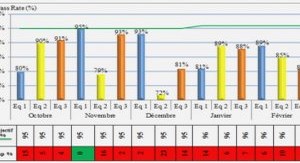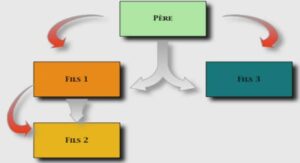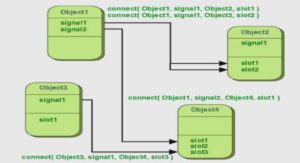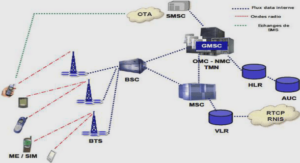Décryptage des réseaux d’interactions plante-champignon pour une meilleure gestion des subéraies méditerranéenne
Cork oak ecology
Cork oak physiology and genetic
Cork oak (Quercus suber L., Fagaceae) is a sclerophyllous tree occurring in the western Mediterranean Basin, selectively growing on acidic soils in hot parts of the humid and subhumid Mediterranean areas (at least 450 mm mean annual rainfall and > 4-5 °C mean temperature for the coldest month) (Lumaret, 2005). Nevertheless, some cork oak populations are observed in the semi-arid zone in Tunisia and Morocco. This evergreen tree is a slow growing tree that can reach about 20 m in height and 250-300 years old, exceptionally 500 years, but due to exploitation of its bark, cork oak populations drastically are mostly 150 years old (Aronson et al., 2009). The origin of cork oak has been proposed as Middle-Eastern or central Mediterranean, with a subsequent westward colonization during the Tertiary Period (Lumaret, 2005). Refuge populations are suggested in Tunisia, Sardinia, Corsica, and Provence (Magri et al., 2007). Its current distribution may be the result of episodic fires (Carrión et al., 2000; Magri et al., 2007). The chloroplast DNA (cpDNA) genetic analysis of Mediterranean cork oak populations revealed the existence of five haplotypes (Magri et al., 2007) (Figure I.1) and the existence of events of multiple hybridization and genetic introgression between Quercus ilex and Q. suber (Lumaret, 2005). Cork oak populations exists on pure populations, probably due to human activities (Carrión et al., 2000), or in mixed populations, notably with oak species and pines (Carrión et al., 2000; Curt et al., 2009). Cork oak ecosystems are characterized by a rich diversity of shrub species of ecological and economic added values, e.g. Cistus monspeliensis, Cistus salviifolius, Pistacia lentiscus, Myrtus communis, Lavandula stoechas, Arbutus unedo, Erica arborea (Carrión et al., 2000; Aafi et al., 2005; Boudiaf et al., 2013). 2. Cork oak regeneration and decline Cork oak has the most remarkable fecundity of all Quercus species and a high germination rate (Aafi, 2007), but poor regeneration rates are recorded in the Mediterranean basin (Aafi, 2007; Curt et al., 2009; González-Rodríguez et al., 2011). For instances, the analysis of a large set of Q. suber plots in Central Western Spain revealed that 62% were lacking any small seedlings and 96% did not have any large saplings (Plieninger et al., 2010). Natural regeneration is directly linked to acorn dispersal and seedling establishment / growth (Pausas et al., 2006). Physiology of tree has been shown as directly affecting regeneration rates (Aafi, 2007), but indirect factors can also strongly impact natural regeneration, notably land use, fire, forest understory and tree neighbors (Pons & Pausas, 2006; Pausas et al., 2006; Aafi, 2007; Curt et al., 2009; Plieninger et al., 2010; Ibáñez et al., 2015b). The decrease of regeneration rates affecting cork oak is emphasize since the beginning of the 20th century by a larger multifactorial syndrome, named oak decline, with a worsening of severity during the 1980s (Camilo-Alves et al., 2013). The symptoms are multiples and occur during a large range of time scales and with various intensity levels. Trees affected present mainly progressive necroses of bark and cambium, slime flux on the trunks and branches, crown thinning, epicormic shoots, reduction in diameter growth (Thomas et al., 2002). 13 Figure I.1. Distribution of molecular lineages of Quercus suber populations in its modern natural area and phylogenetic reconstruction of the relationships among haplotypes. [from (Magri et al., 2007)] 14 The consequences are higher tree mortality, reduced cork productivity, and a decrease in tree regeneration and density, leading to a decline of cork oak distribution area, as well as major changes in cork oak forest understory. A range of abiotic and biotic factors are implicated in the oak decline (Thomas et al., 2002), and can be categorized as predisposing, contributing or inciting factors (Sallé et al., 2014). The predisposing factors are acting constantly, mainly related to habitat characteristics and management strategies. Contributing or inciting factors are more limited in the time but intense. The main contributing and inciting factors are detailed below. 2.1 Drought and fires Land use, pests and diseases are the most studied factors regarding cork oak decline, but because drought and fire episodes (frequency, intensity levels) lead to high levels of disturbances of cork oak ecosystem functioning in a short time scale, it has been assumed these abiotic factors strongly contributed to oak decline symptoms. In addition, the symptoms observed for trees affected by decline or drought are similar (Costa et al., 2010). Cork oak is able to adapt to drought conditions by reducing leaf water potential, specific leaf area, stomatal conductance, and by increasing leaf temperature and non-photochemical quenching (Ramírez-Valiente et al., 2009; Grant et al., 2010). Nevertheless, drought is considered as the main cause of enhanced tree mortality in oak forests, notably for cork oak (David et al., 2007), and climate change analysis predicted drought as the main consequence in Mediterranean basin (Polade et al., 2014). Severity or long period of drought was suggested as predisposal factors for decline of mature oaks (Costa et al., 2010). Indirect impacts of drought on cork oak regeneration were also observed through the alteration of canopy neighbour trees and species relative abundance (Ibáñez et al., 2015b), or by the use of plants with a root system unsuited to the sites generally characterised by insufficient water (Zine El Abidine et al., 2016). Fire is a major factor shaping Mediterranean forests (Tomaz et al., 2013; San-Miguel-Ayanz et al., 2013), with 600,000 ha burnt each year. Cork oak is considered as a resistant species to fire due notably to its thick and insulating bark (Pausas et al., 2008). Nevertheless, cork oak management represents a major factor affecting resistance of Q. Suber to fire since trees with thin bark (young or recently debarked individuals) are particularly vulnerable to fire (Catry et al., 2012). Fire was also shown to strongly impact cork oak forest understory and soil properties (abiotic characteristics and microbiota) (Buscardo et al., 2010; Schaffhauser et al., 2012; McLellan et al., 2013). The characteristics of forest understory (e.g. composition, biomass and structure) related to fire history is directly linked to cork oak recruitment patterns (Curt et al., 2009). 2.2 Pests and Pathogens Oak decline is commonly studied through pests and pathogen perspectives because their interaction with oak is generally considered as the ultimate step before the death of trees. Two groups of organisms are implicated, i.e. insects and fungi (Thomas et al., 2002; Tiberi et al., 2016). Implication of bacterial pathogens or viruses is unclear (Thomas et al., 2002). The insects affecting cork oak are categorized as defoliating and bark- and wood-boring insects. Depending of severity and frequency of defoliations, defoliating insects can be the cause of oak mortality or facilitate the attack of other pathogens (Tiberi et al., 2016). 15 Moths represent the most abundant and harmful defoliating insects but difference in geographical distribution are observed depending of species (Tiberi et al., 2016). The major species are Lymantria dispar, Tortrix viridana, Euproctis chrysorrhoea, Malacosoma neustria, Periclista andrei. The highest number of species was observed in Portugal (Tiberi et al., 2016). The negative impact on oak species of bark- and wood-boring insects is major in all Europe (Sallé et al., 2014). They particularly affect weakened trees and represent an important vector of phytopathogenic fungi (Tiberi et al., 2016). The main species implicated in cork oak decline are xylophagous species belonging to Coleoptera order, i.e. Platypus cylindrus, Cerambyx spp., Prinobius spp. Two other species are more restricted to Iberian Peninsula, i.e. Coroebus undatus and Coroebus florentinus (Tiberi et al., 2016). Fungal pathogens implicated in cork oak decline can affect the whole tree, root, trunk, branches, and in a lesser extent leaves. Phytophthora cinnamomi represent the main root rot pathogen (Camilo-Alves et al., 2013). Nevertheless, the detection at low and high frequency of Pythium spiculum and Pythium sterilum in decline stands, respectively, suggest a wider range of root rot pathogens implicated in oak decline (Romero et al., 2007). Other pathogens causing the drying of branches, vascular necrosis and cankers on the trunks are also cited as main factors of cork oak decline, notably Biscogniauxia mediterranea (formerly Hypoxylon mediterraneum), Botryosphaeria stevensii and Diplodia corticola (anamorph of B. stevensii) (Elbadri & Abadie, 2000; Luque et al., 2000; Henriques et al., 2016). The worsening of all decline factors due to global changes, and their interaction, may drastically and durably affect cork oak ecosystem functioning (Martín et al., 2005; Acácio & Holmgren, 2014; Sallé et al., 2014; Tiberi et al., 2016; Hubbart et al., 2016). The better characterization of drivers of cork oak ecosystem functioning is crucial to develop sustainable strategies to mitigate cork oak forest degradation and decline. However, the deciphering of cork oak ecosystem functioning mainly focuses on above-ground components and the mitigation of biotic (pathogens) and abiotic stresses, whereas below-ground functioning plays a crucial role in all terrestrial ecosystems (Wagg et al., 2014), notably through soil microbiome diversity and functionalities (Nannipieri et al., 2003; Rillig, 2004; Wardle, 2004; Marschner et al., 2007; van der Heijden et al., 2008; Bevivino et al., 2014). The assessment of different scenarios regarding the impact of cork oak ecosystem disturbances on soil microbiome (Figure I.2) constitutes a key step for a better management and conservation of this emblematic Mediterranean ecosystem. II. Impact of cork oak forest degradation and decline on soil microbiome Several studies reported the strong impact of cork oak degradation on soil microbiome, with a main interest about the role and diversity of soil ectomycorrhizal (EcM) fungal communities establishing a symbiosis with cork oaks (Azul et al., 2009; Boudiaf et al., 2013; Lancellotti & Franceschini, 2013). However, Q. suber and more generally Quercus spp. establish biotic interactions with a broader range of soil microorganisms, from arbuscular mycorrhizal (AM) fungi (Dickie et al., 2001; Egerton-Warburton & Allen, 2001; Toju et al., 2013a), ericoid mycorrhizal (ErM) fungi (Bergero et al., 2000), root endophytic fungi (Toju et al., 2013a,b), to soil bacteria (Marongiu et al., 2006; Boudiaf et al., 2013). An overview of the different soil microbiome compartments impacted by cork oak degradation and decline is detailed below. Figure I.2. Hypothetical scenarios of interactions between soil microbiome (diversity and structure) and cork oak ecosystem status (decline severity and land use intensities). (a) negative correlation, (b) no significant correlation and, (c) positive correlation. 1. Soil mycorrhizal community Mycorrhizal fungi constitute one of the most important microbial compartments for forest functioning (Courty et al., 2010; Baldrian, 2017). They promote plant nutrition (N,P), notably in low nutrient soil, and improve the resistance to various abiotic stress (e.g. drought) and plant pathogens (Smith & Read, 2009). EcM fungal surveys in Mediterranean cork oak ecosystems revealed a wide range of fungal genera, 37 belonging to Basidiomycota and 12 to Ascomycota (Table I.1 and Table I.2), with a high number of Lactarius, Russula and Tricholoma species. The majority of EcM fungal surveys detailed in Table I.1 and I.2 were based either on fruitbodies or on fungal mantle structure covering the root surface, i.e. morphotypes (Azul et al., 2009; Bakkali Yakhlef et al., 2009; Lancellotti & Franceschini, 2012, 2013). These approaches can however lead to biases, (i) overestimations of fungal taxa with above-ground fruitbodies to the detriment of fungal taxa with inconspicuous structures or lacking sexual structures, and (ii) misinterpretations of fungal diversity due to incompleteness and variations of morphological criteria (Taylor & Alexander, 2005; Smith & Read, 2009). For instance, EcM fungi belonging to Gloniaceae (mostly Cenococcum), Russulaceae (mostly Russula) and Thelephoraceae (mostly Tomentella) were generally the most dominant (> 50% of EcM community) in cork oak ecosystems investigated in Portugal and Sardinia (Azul et al., 2010; Buscardo et al., 2010; Lancellotti & Franceschini, 2013). However, Cenococcum was absent from fruitbody surveys due to the lack of sexual structures. By contrast, Pisolithus, Boletus and Lactarius appeared as one of the most abundant EcM fungi in fruitbody surveys (Azul et al., 2009; Bakkali Yakhlef et al., 2009). Land-use intensity and decline were shown to negatively impact the richness and diversity of EcM fungal communities (Azul et al., 2010; Buscardo et al., 2010; Barrico et al., 2010). However, the investment of EcM symbiosis (rate of colonization) was differentially impacted depending of forest status (decline and land use practices). Decline and fire did not significantly impact the EcM colonization rate of Q. suber (Buscardo et al., 2010; Lancellotti & Franceschini, 2013), whereas plant invasion and land use intensity strongly affected it (Azul et al., 2010; Boudiaf et al., 2013). The differences of impacts on the EcM fungal communities regarding the type of disturbances are probably due to direct interactions of EcM fungal community with a various range of biotic and abiotic factors (Azul et al., 2010; Lancellotti & Franceschini, 2013). For instance, differences in soil characteristics or plant cover types (due to a given disturbance) are known as major drivers of EcM diversity (Pena et al., 2016). The significance of AM fungi in cork oak ecosystem functioning is generally underestimated compared to those of EcM fungi since Q. suber is considered as an ectomycorrhizal tree. However, the presence of AM fungi in the juvenile states of trees and consequently their potential role in natural tree regeneration has been described for Q. suber (Boudiaf, 2012; Ibáñez et al., 2015a) and other Quercus species (Dickie et al., 2001; Egerton-Warburton & Allen, 2001). AM fungi belonging to the Glomerales order are the most abundant AM taxa observed in cork oak ecosystems (more than 95 % of AM fungal community), with a predominance of fungi affiliated to Rhizophagus irregularis (ex. Glomus intraradices) (Lumini et al., 2010). This species is considered as generalist due to its worldwide distribution in various ecosystems and its ability to colonize a large range of hosts, but presents also “ruderal” characteristics (disturbance tolerant) (van der Heijden & Scheublin, 2007; Tisserant et al., 2011). Land uses positively affected AM fungi community, probably because of the transition from an EcM vegetation (old growth cork oak woodland) to an AM fungal vegetation (pasture) (Lumini et al., 2010).
Soil bacterial community
The characterisation of bacterial communities in Mediterranean cork oak ecosystems has been poorly investigated compared to mycorrhizal communities. The predominance of Proteobacteria, Actinobacteria, Bacteroidetes and Firmicutes phyla have been reported (Lagomarsino et al., 2011; Bevivino et al., 2014), but the majority of studies focused on global response of soil microbial activity to land use practices (Marongiu et al., 2006; Lagomarsino et al., 2011; Costa et al., 2013; Francioli et al., 2014). A functional group was particularly investigated, the soil denitrifying bacteria. This group was shown as significantly affected by land use intensities, seasonal variations and soil characteristics (Pastorelli et al., 2011). A parallel monitoring of vascular plant community and denitrifying bacteria revealed a similar trend regarding contrasting land uses (Bagella et al., 2014). The assessment of soil microbial functionalities demonstrated a correlation among microbial activity, functional biodiversity and land use intensities. Soils subjected to low land use intensities showed a higher stability of bacterial communities and microbial activities compare to strong land use intensities (Lagomarsino et al., 2011; Bevivino et al., 2014), but as for EcM community, land use impacts are dependant of seasonal variations (Costa et al., 2013; Francioli et al., 2014; Bevivino et al., 2014). Biological invasion was also shown as a strong factor affecting soil microbial functional diversity in cork oak ecosystems (Boudiaf et al., 2013), as well as Q. suber seedlings. Overall, cork oak ecosystem degradation and decline deeply impact soil microbiome consequently. Different strategies were proposed to mitigate the effect of ecosystem degradation through soil microbiome management (microbial inoculation, microbial activity stimulation) but their durability in time is poorly investigated. The two most promising ecological strategies based on soil microbiome management are detailed below.
Introduction générale |




